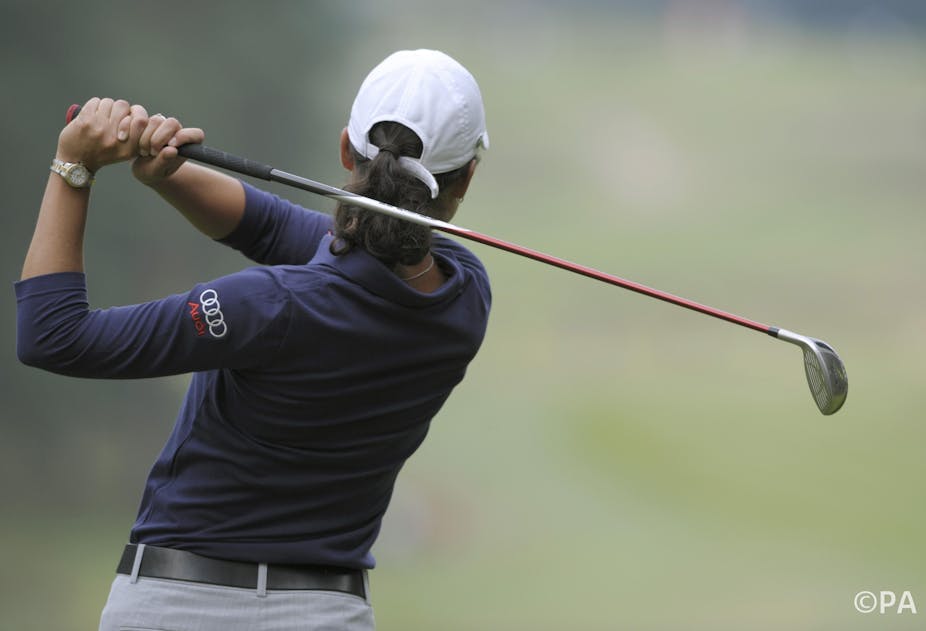The Royal and Ancient golf club in St Andrews has voted to allow women members for the first time in what could prove a major tipping point for the sport. In a ballot of 2,400 members, 85% voted in favour of the historic move.
But research shows that while women have been given membership to many clubs before, they continue to feel ostracised. The Royal and Ancient, as the spiritual home of golf, should make sure this changes.
The Royal and Ancient draws enthusiasts from around the world and charges itself with “safeguarding golf’s history”. Letting women in represents quite a sea-change, since the club has been exclusively male for 260 years. Women golfers could previously play on the club’s old course but couldn’t become members or even use the club house. This decision is therefore a big step forward for golf in the UK.
Golf is a sport closely linked to a range of traditional, conservative class, gender and racial ideologies and stereotypes. Membership of often exclusive clubs brings players into well-manicured enclaves, designed mostly by men for men, where they can play and relax. But for some, the stereotypically slow-moving rhythms of the sport have become a metaphor for the rather arcane views on society that can be overheard in clubhouse conversations.

Research soon to be published by the Department of Sport and Exercise at the University of Winchester into the “place” of women in golf clubs in the south of England revealed that many frequently suffered from overt or covert gender stereotyping and felt marginalised. Even the talented captains of women’s teams tended to report a general lack of respect from club members. This usually manifested itself in the form of “banter” among men, who would suggest that women should be more concerned with teas than tees.
They were being excluded in more formal ways too. Clubs were found to be reserving tee-times for men only, excluding women from committee meetings and relegating female honours boards to less prominent rooms in the clubhouse.
For golf to be more in-step with society it clearly needs to continue to be more open. Clubs that hold onto their old-fashioned views should look to cricket for inspiration. The decision to allow women to become members of the Marylebone Cricket Club in 1999 and to allow women members a share in the guardianship of cricket at its headquarters at Lord’s in London has been regarded as a significant turning point for the sport.
It’s no coincidence that women’s cricket has flourished in the years since. The England women’s team entered a professional era in May 2014 when 18 players were handed full-time contracts. Two women cricketers, Clare Taylor and Charlotte Edwards, have also successfully infiltrated another male bastion of cricketing tradition by being named Wisden’s cricketer of the year in 2009 and 2014 respectively.
In an era when traditionally masculine sports and their governing bodies are trying to be more inclusive through campaigns such as Football v Homophobia, it seems entirely appropriate for other barriers to sports participation to be challenged or removed for the greater good of the development of the sport.
It would be misguided to think that golf is not a significant part of British culture and society. The sport is a container for many traditional conservative ideals and the Royal and Ancient ballot represents an opportunity for golf’s guardian to challenge these ideals and develop a more inclusive environment for women. Membership must mean membership though. Women must be allowed onto boards and have the same access as the men. If Royal and Ancient can make that happen, then we’ll be making real progress.

